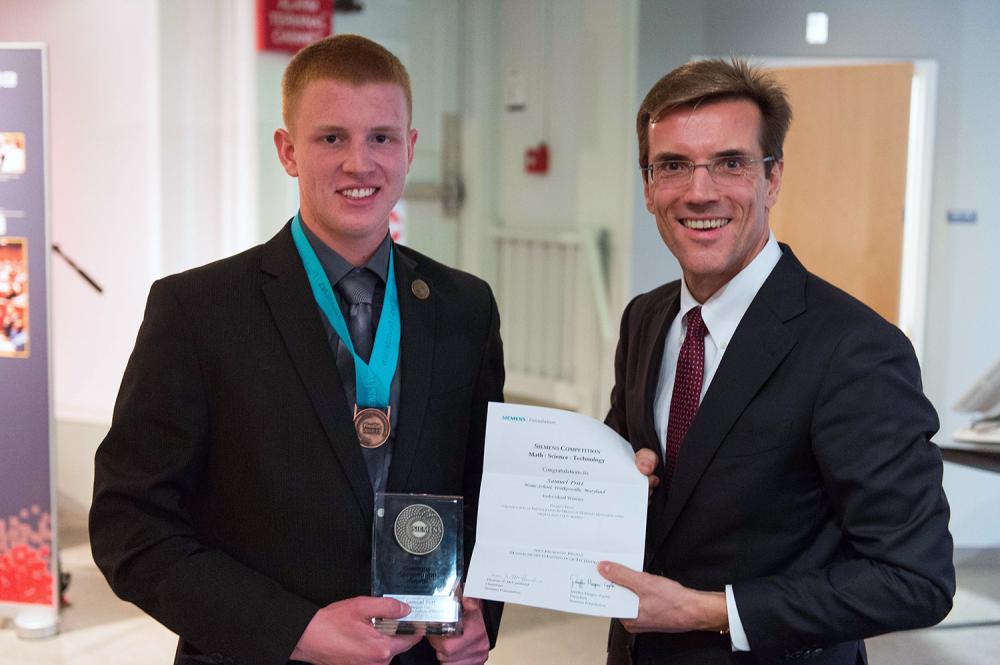By Ashley DeVine, Staff Writer
Student intern Sam Pritt’s interest in improving geolocation led him to develop a project that won a top regional prize at the Siemens Competition in Math, Science, and Technology in November.
Pritt was awarded a $3,000 college scholarship, and he competed in the national competition in early December.
Pritt created an algorithm that uses horizon matching to determine where a photograph was taken. “It matches the horizon visible in the photograph against virtual horizons simulated from terrain elevation data, and it looks for the best match to yield the location,” explained Pritt, a homeschooled senior from Walkersville.
Geolocation, the process of identifying the geographic location of an object, is usually a manual procedure that is time-consuming and has limited success, Pritt said, noting that his algorithm is more automated.
Potential Use in Counterterrorism
Pritt believes his algorithm could potentially be used in counterterrorism efforts. “Terrorists take lots of photos and videos, occasionally even posting them online, and intelligence analysts need to know where they were taken,” he said.
In one test, Pritt’s algorithm correctly identified the locations of 83 places in 100 photographs, he said. This accuracy attracted the attention of an engineer at Lockheed Martin, who was contacted by the Federal Emergency Management Agency (FEMA) with a request to use Pritt’s algorithm to map a coastal area affected by Hurricane Sandy.
An Early Interest in Computer Programming
Since elementary school, Pritt has had an interest in computer programming and software development. After taking an Advanced Placement Computer Science class in tenth grade, Pritt was looking for a science project, and his father, an engineer at Lockheed Martin, introduced him to the concept of geolocation.
“We started experimenting with satellite imagery and terrain and that was what eventually gave me the idea to use the horizon,” said Pritt, who worked on his winning project for 18 months with his father as his mentor.
Internship at FNL
Pritt is currently a Werner H. Kirsten student intern in the Cancer and Inflammation Program, working with mentor Nadya Tarasova, Ph.D., head of the Synthetic Biologics and Drug Discovery Facility.
“Sam loves science, but he also works very hard because he has a very strong sense of responsibility,” Tarasova said. “He was able to generate the data that explains the molecular mechanisms of a very potent and promising anti-tumor agent, Wnt pathway inhibitor, generated in the lab.”
Pritt hopes to attend Harvard and major in chemical and biomolecular engineering.


